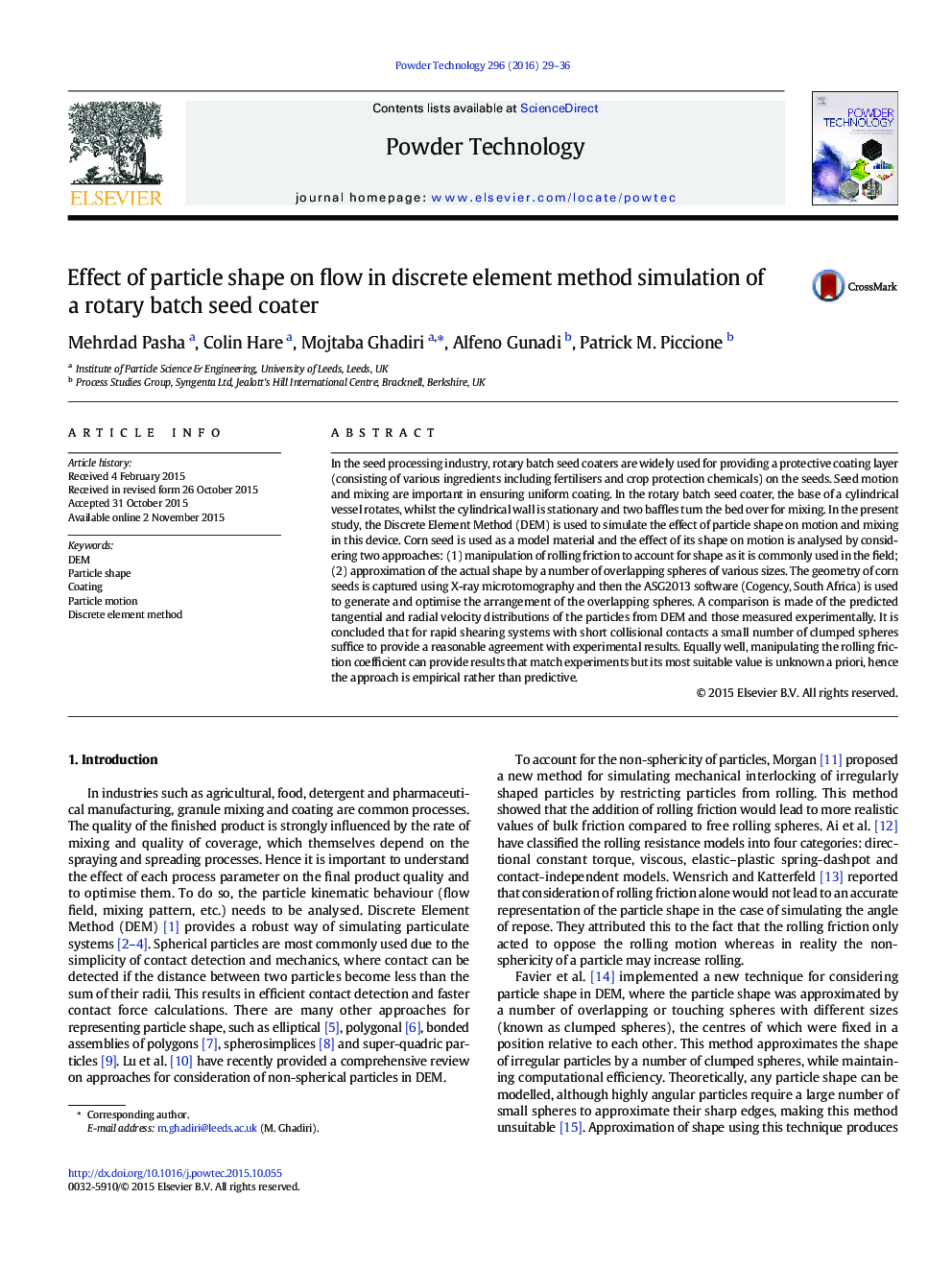| Article ID | Journal | Published Year | Pages | File Type |
|---|---|---|---|---|
| 234960 | Powder Technology | 2016 | 8 Pages |
•The motion of seeds in a rotary seed coater is analysed experimentally and by DEM.•Clumped sphere and rolling friction methods are considered for particle shape (DEM).•A good agreement is found between the experiments and both shape methods.•Rolling friction method requires calibration hence the method is empirical.•The clumped sphere method is predictive.
In the seed processing industry, rotary batch seed coaters are widely used for providing a protective coating layer (consisting of various ingredients including fertilisers and crop protection chemicals) on the seeds. Seed motion and mixing are important in ensuring uniform coating. In the rotary batch seed coater, the base of a cylindrical vessel rotates, whilst the cylindrical wall is stationary and two baffles turn the bed over for mixing. In the present study, the Discrete Element Method (DEM) is used to simulate the effect of particle shape on motion and mixing in this device. Corn seed is used as a model material and the effect of its shape on motion is analysed by considering two approaches: (1) manipulation of rolling friction to account for shape as it is commonly used in the field; (2) approximation of the actual shape by a number of overlapping spheres of various sizes. The geometry of corn seeds is captured using X-ray microtomography and then the ASG2013 software (Cogency, South Africa) is used to generate and optimise the arrangement of the overlapping spheres. A comparison is made of the predicted tangential and radial velocity distributions of the particles from DEM and those measured experimentally. It is concluded that for rapid shearing systems with short collisional contacts a small number of clumped spheres suffice to provide a reasonable agreement with experimental results. Equally well, manipulating the rolling friction coefficient can provide results that match experiments but its most suitable value is unknown a priori, hence the approach is empirical rather than predictive.
Graphical abstractFigure optionsDownload full-size imageDownload as PowerPoint slide
